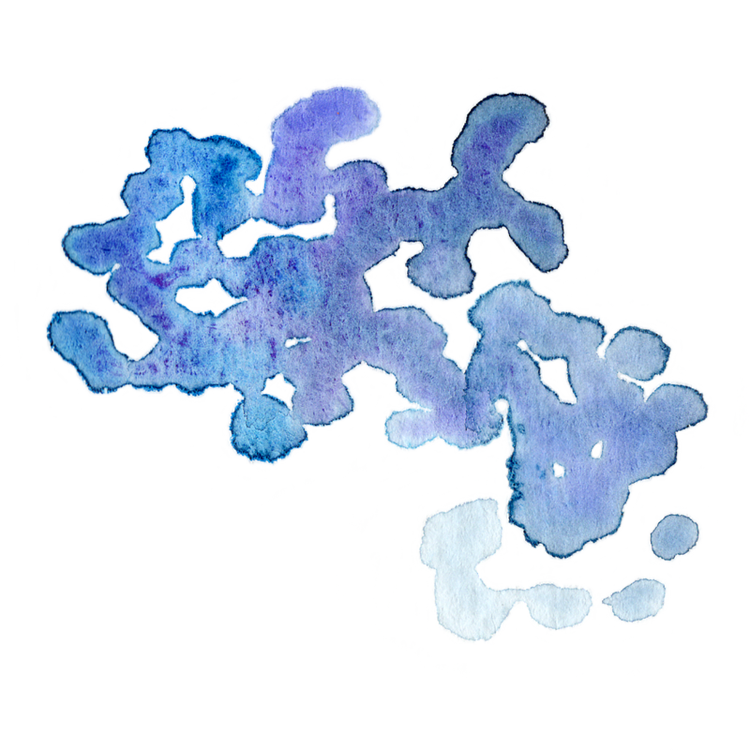
Paper pulp is one of my new favorite mediums. For one thing, it’s nearly free to make, and secondly, it doesn’t take any fancy equipment or any previous knowledge to use. The only real downfall is that it does take patience. The other thing that can go terribly wrong is mold. I live in a humid climate and I’ve had pieces get totally moldy and had to throw them away. I’ll give you some tips for preventing mold throughout. Paper pulp projects are not the kind you can complete in one sitting.
Click the link below to read on:
I made these initials for the entryway to my studio, since I’m in a shared space, it’s nice to have something by the door so everyone knows it’s you!

Start by shredding (or cutting, which I found easier) newspaper into about half inch strips.

For just two letters, I used maybe four big sheets of the newspaper until my bowl was full (without squishing the paper down).

Then, fill the bowl with water until the water level covers all of the paper. You might want to squish down the paper now just to make sure it’s all fully submerged. Leave this overnight.

Next, you’ll need some flour and salt, and you might as well fill a cup with water now, because you might need a bit in a few steps. Flour is what holds the fibers together, it acts as your glue. Some paper pulp recipes don’t call for salt, but let me tell you, if you live somewhere humid, you are going to want the salt. It’s going to help prevent mold.

Go ahead and drain the water out of your mixing bowl. Don’t squeeze the paper though, you’ll want to keep the water that the paper has absorbed.

Start adding flour, I used about a third cup of flour to start.

Don’t forget the salt! I just eyeball it, probably about two tablespoons for this much paper.

Start kneading the paper, flour and salt mixture. Spend a lot of time now ripping up the paper so there are no big chunks left. It will begin to look like this. At this point, it needs more flour, as it’s not all sticking together.

Add another scoop of flour and continue to knead the mixture. It should start sticking together almost like cookie dough. If it keeps falling apart, add a little water (be conservative) and mix it in.

This is nearly ready, but needs a tiny bit of water (think 1/8 of a cup) and more flour.

Once the whole thing is able to hold together in a ball, it’s ready. Keep adding flour and water until you can get it like this. Altogether, it should take at least 30 minutes of kneading to get the right texture.

Now take half of it (for two letters) and form the outside of the letter.

Then, punch out the holes.

Once you have your letters ready, let them sit out on a cooling rack. You’ll need the extra airflow for them to dry completely. This part takes time. If you are going to let them air dry, leave them for 3-5 days. Otherwise, put them in the oven (on the rack) on 200 degrees Fahrenheit for about 2 hours or until dried out. Check them constantly! You could start a fire by putting paper in your oven. The oven method will also help prevent molding.

Now, you have these kind of ugly dried paper pulp letters! I like them lumpy, it’s a cool funky look, but if you don’t like them like this, use a piece of sandpaper to smooth your edges. If you chose to let your letters air dry, check them for mold. If you see signs of mold, I would get rid of them. That smell will never go away.

This step is optional, but I painted a coat of gesso before going to colors. This is a better base for acrylic paints.

Now, you can paint them however you want! I wanted a half yellow, half pink mix, so I taped them off and did the colors separately.


Here they are almost done!

While the paint dries, you can make a few pom poms to decorate. There are so many pom pom tutorials out there, that I’m not gonna walk you through this one.

I added a coat of acrylic gloss medium, because I can’t stand the texture of acrylic paint, but this is totally optional.

Add a bright string. If your letters don’t have counters (aka holes) then you can use an awl or a drill to make them.

Braid together your pom poms and attach them to the string, I used a tiny bit of hot glue to get my pom poms to lie where I wanted them.

And done!!










































